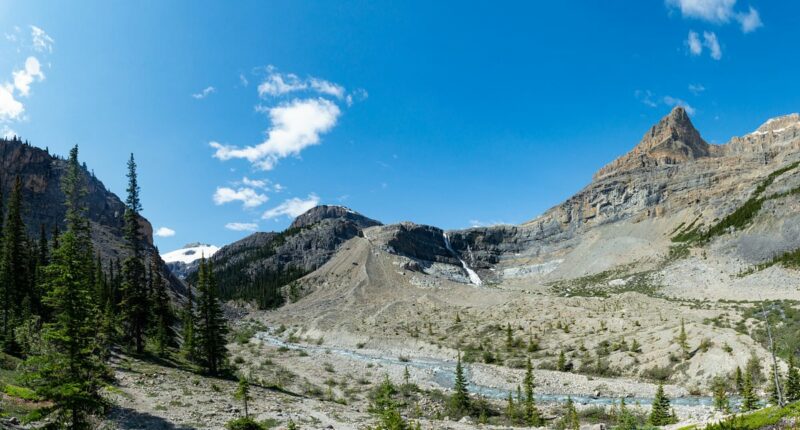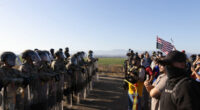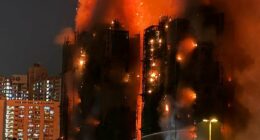Share this @internewscast.com
The State Department has issued an updated travel advisory for Canada amid a period of elevated tensions between the two countries.
The advisory follows a steep decline in Canadian tourism to the US and mutual criticism over immigration enforcement and environmental fallout.
While Canada remains designated as a low-risk country where only ‘normal precautions’ are advised, the June update highlights increased environmental hazards and urges travelers to monitor local alerts and follow emergency guidance.
The new guidance carries an urgent tone that would have once seemed unthinkable between two countries and marks a rare moment of public friction between the neighboring allies.
The relationship has been strained in recent months by political rhetoric and cross-border air quality concerns linked to Canada’s record-breaking wildfires.
‘In Canada, wildfires are common in forested and grassland regions from May to September,’ the US Embassy and Consulates in Canada now cautions.
‘In 2024, Canada was affected by record-breaking wildfires affecting all 13 provinces and territories.’ American travelers are being urged to stay alert, follow local guidance, and monitor air quality conditions closely.
The reminder may sound routine but it comes at a time as the two allies are grappling with a growing sense of mutual unease.

The State Department has issued an updated travel advisory for Canada amid a period of elevated tensions between the two countries. Pictured, Bow Glacier Falls and St. Nicholas Peak, Alberta, Canada

The State Department has issued an updated travel advisory for Canada, warning American citizens to be aware of worsening wildfire conditions across all 13 provinces and territories. Pictured, a haze blankets Toronto during an air quality warning earlier this week

The relationship has been strained in recent months by political rhetoric and cross-border air quality concerns linked to Canada’s record-breaking wildfires
Last week, Trump threw a grenade on the tariff negotiations between the United States and Canada with a blistering letter to Prime Minister Mark Carney.
The two nations had been trying to settle the tariff war that broke out when Trump returned to office and announced plans to reorganize world trade.
Canadian officials had hoped a deal was close, but Trump’s latest letter – which he shared to Truth Social on Thursday night – set negotiations back to square one.
The letter revealed he would raise tariffs on Canadian products to 35 percent from August 1 – a 10 percent increase on the current levy.
Trump said the tariff hike was in part due to the fentanyl crisis and Canada’s ‘failure to stop the drugs from pouring into our country’.
‘I must mention that the flow of fentanyl is hardly the only challenge we have with Canada, which has many tariff, and non-tariff, policies and trade barriers,’ Trump wrote in the letter.
Carney, who took office this year in a liberal win partly powered by Trump’s trade actions and threats to make Canada the 51st state, his back in an online posting.
‘Throughout the current trade negotiations with the United States, the Canadian government has steadfastly defended our workers and businesses,’ Carney wrote.

President Donald Trump fired off a letter to Canada on Thursday announcing a new 35 percent tariff. He said he spoke to Canadian PM Mark Carney that night

Carney was elected prime minister in April on the argument that Canadians should keep their ‘elbows up’

Trump’s decision to single out America’s second largest trading partner after Mexico came as a surprise

While multiple countries have received tariff letters last week, Canada has become a thorn in Trump’s side during his second term
‘We will continue to do so as we work towards the revised deadline of August 1. Canada has made vital progress to stop the scourge of fentanyl in North America. We are committed to continuing to work with the United States to save lives and protect communities in both our countries.
That came after Trump mentioned fentanyl in his trade letter, and called out Canada for a ‘failure’ to control it.
‘If Canada works with me to stop the flow of fentanyl, we will, perhaps, consider an adjustment to this letter,’ Trump added.
‘These tariffs may be modified, upward or downward, depending on our relationship with your country,’ he added.
The latest round of tariffs are in addition to previously imposed sectoral tariffs on steel, copper and aluminum, which came into effect for most countries on June 4 at a whopping 50 percent.
The latest travel advisory follows years of quietly simmering friction that boiled over earlier this year when President Trump repeatedly mocked former Canadian Prime Minister Justin Trudeau, referring to Canada as America’s ’51st state,’ and demoting Trudeau to the title of ‘governor.’
The introduction of tariffs between the two countries and Trump’s hardline immigration policies have also seen Canadian travel to the US plunge by up to 40 percent this spring, as stories of tourists caught in the web of US immigration enforcement made headlines across the border.
In response to the spike in travel-related incidents, the Canadian government has since revised its own advisory for citizens visiting the US, bluntly stating that travelers must ‘comply and be forthcoming in all interactions with border authorities’ and warning that visitors ‘could be detained while awaiting deportation.’
Last month the US Ambassador to Canada Pete Hoekstra attempted to tamp down concerns, calling the fears ‘unfounded’ and the high-profile detentions ‘isolated.’
But those reassurances did little to stem the unease especially as smoke from Canadian wildfires once again began spilling across the border.
The immediate concerns outlined in the new US travel advisory is environmental: smoke, fires, and increasingly unbreathable air.
This month, a fresh round of wildfires erupted in Manitoba, sending smoke billowing eastward and triggering air quality alerts from Toronto to Nova Scotia.
Americans haven’t forgotten what happened in June 2023 when smoke from Canadian blazes shrouded major US cities.

The introduction of tariffs between the two countries and Trump’s hardline immigration policies have also seen Canadian travel to the US plunge by up to 40. Toronto is pictured

In response to the spike in travel-related incidents, the Canadian government has since revised its own advisory for citizens visiting the US, bluntly stating that travelers must ‘comply and be forthcoming in all interactions with border authorities’

Tourists pose for a photo against city view of Toronto on Monday as smoke from wildfires blankets the city
The skies over New York City turned an apocalyptic orange, with the city suffering some of its worst air quality on record.
In a sharply worded letter, Republican representatives Tom Tiffany, Glenn Grothman, and Michelle Fischbach called on Canadian Ambassador Kirsten Hillman to take more aggressive action.
‘We write to you today on behalf of our constituents who have had to deal with suffocating Canadian wildfire smoke filling the air to begin the summer,’ the lawmakers declared.
The Canadian Embassy, in response, told the BBC that its government ‘takes wildfire season very seriously’ and emphasized that Canadian communities were facing even more severe impacts.






